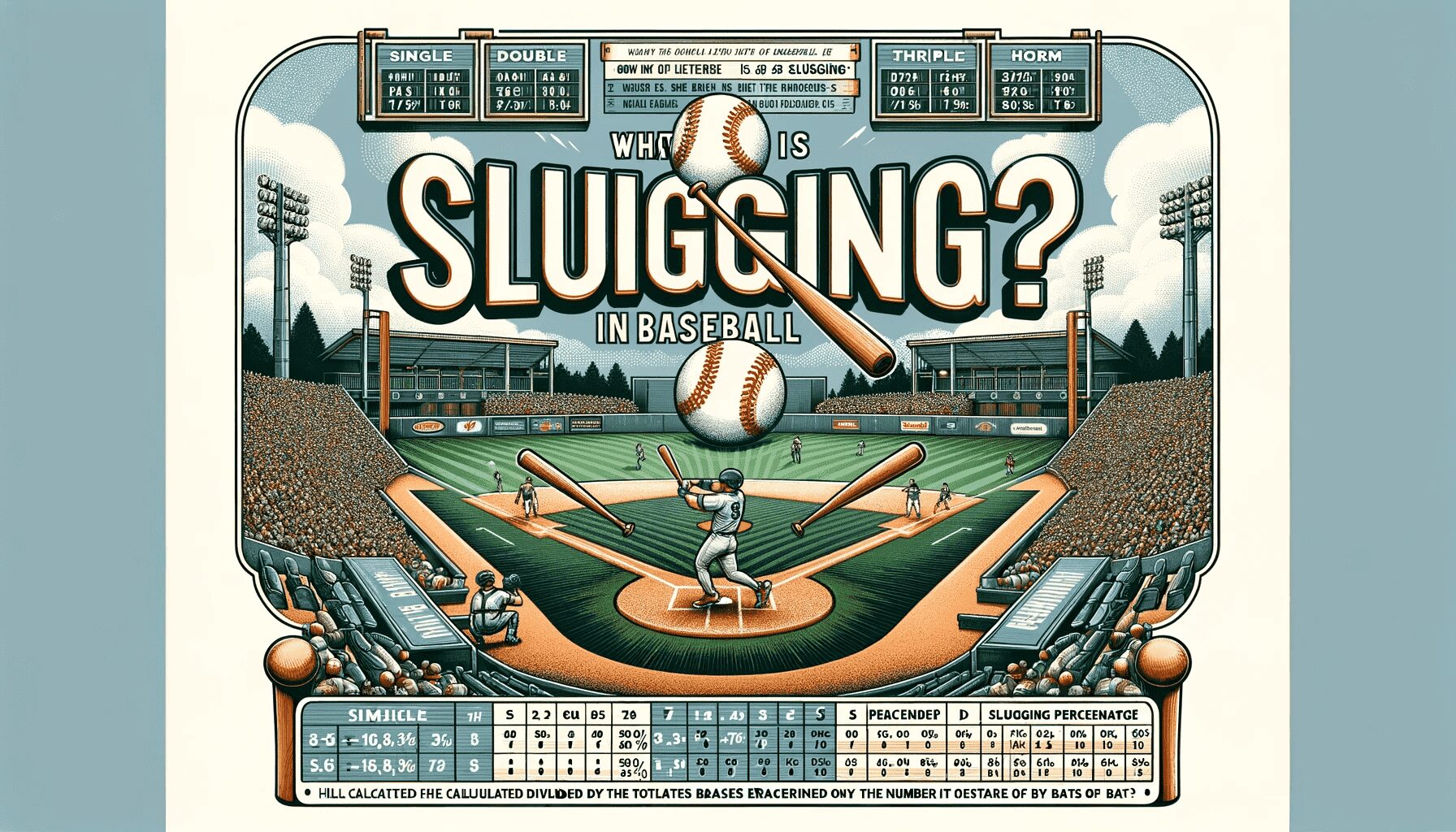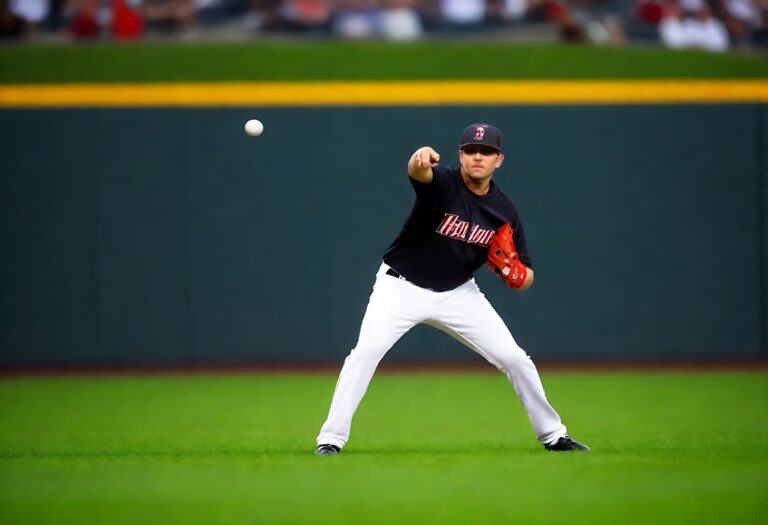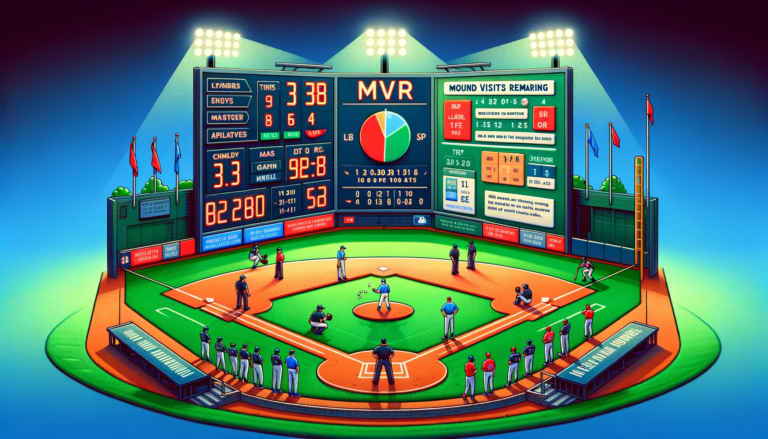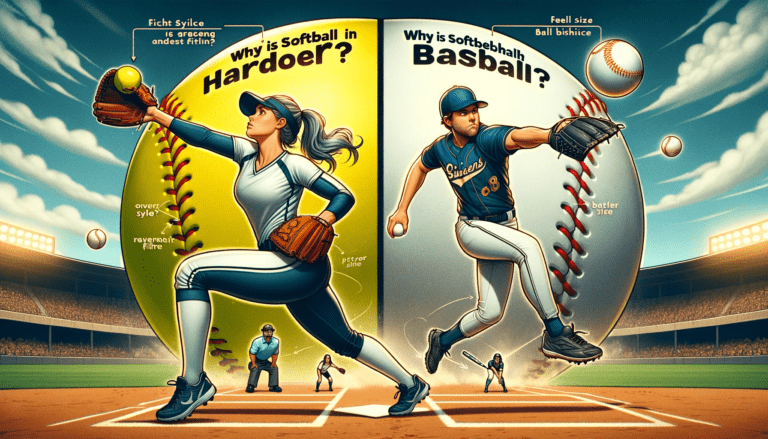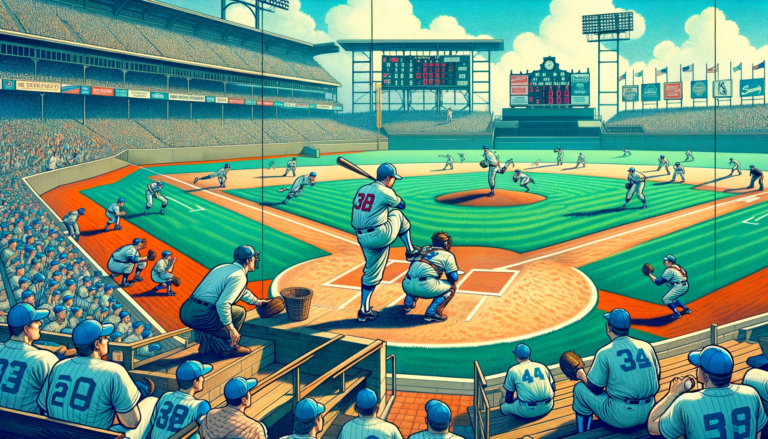What is Slugging in Baseball?
Slugging in baseball refers to a player’s ability to hit for power and get extra-base hits like doubles, triples, and home runs.
A player’s slugging percentage is calculated by taking the percentage of their total bases from all their hits and dividing it by the number of at-bats. Singles count as one base, doubles as two, triples as three, and home runs as four bases.
In this article, we will explore what slugging is, how it’s calculated, and why it’s a key part of evaluating a player’s performance. This will give you a new way to look at baseball stats and enjoy the game even more.
Key Takeaways
- Recognizing the importance of strategic pitch selection and understanding different pitch types can significantly impact a batter’s success at the plate.
- The mechanics of a powerful swing involve a combination of weight shift, hip rotation, and bat speed, all of which can be honed through dedicated training.
- Selecting the right equipment and utilizing player perks are crucial for maximizing performance and complementing a player’s individual style and role on the team.
- A strong mental approach, including the ability to anticipate pitches and make in-game adjustments, is as important as physical skill in hitting.
- Advanced statistics like WAR and OPS offer valuable insights into a player’s contribution and can enhance both the fandom and strategic understanding of baseball.
Exploring the Pitcher’s Arsenal

Understanding Different Pitch Types
Pitchers often possess a repertoire of pitches, each with its own unique characteristics and strategic uses.
A pitcher’s arsenal can include a variety of pitches such as fastballs, sliders, curveballs, and changeups.
While some pitchers may know many different types, they typically rely on four or five during a game, ensuring they have mastered each one.
The ability to throw multiple pitches that appear similar out of the hand but diverge in trajectory as they approach the plate is a valuable skill.
For instance, a pitcher might use a 2 seam fastball to induce ground balls, while a 4 seam fastball is designed for velocity and rise, deceiving the batter.
Other pitches like a hard gyro slider or a split change can add to the confusion, breaking in unexpected ways and keeping hitters off balance.
Recognizing and understanding these pitches is crucial for batters. It involves not only physical skill but also a mental component: remembering a pitcher’s tendencies, the ‘extra zip’ on a fastball, or the reliability of a curve.
Adjusting one’s stance and approach based on these observations can make the difference between a strikeout and a solid hit. You may read the guide on What is the Mercy Rule in Baseball
Strategic Pitch Selection Against Batters
Pitchers must meticulously analyze a batter’s strengths and weaknesses to determine the most effective pitch selection.
By delving into the intricacies of how well hitters perform against pitches with different Stuff+ and movement characteristics, patterns emerge that can be exploited.
For instance, a batter with a tendency to chase curveballs outside the strike zone may struggle against a pitcher with a strong breaking ball.
- Assess the batter’s history: Look at past performances against various pitch types.
- Consider the game situation: Factor in the count, runners on base, and score.
- Exploit weaknesses: Use pitches that challenge the batter’s known vulnerabilities.
Understanding these elements is crucial for a pitcher aiming to outsmart the batter. It’s a chess match where each pitch can shift the momentum of the game.
The Mental Game: Pitcher vs. Batter
The duel between pitcher and batter is as much a psychological battle as it is a physical one. Mental approach is a significant factor in determining the outcome of each at-bat.
A successful hitter must possess not only the skills to hit the ball but also the mental fortitude to face down the pitcher.
This involves a deep understanding of one’s own hitting style and the ability to adapt to the pitcher’s strategy.
Key elements of the mental game include:
- Recognizing each pitch and its potential trajectory
- Patience to wait for a pitch within one’s strike zone
- Confidence and composure under pressure
- Memory recall of previous encounters with the pitcher
By focusing on these mental aspects, a hitter can gain an edge over the pitcher, turning the tide of the game in their favor.
It’s about staying composed, confident, and focused, while also being flexible and adaptable to the situation at hand.
Read Also: What is a Bullpen in Baseball
The Mechanics of a Powerful Swing

The Role of Weight Shift and Hip Rotation
In the art of slugging, the weight shift and hip rotation are critical components for generating power in a swing.
A batter’s ability to transfer weight from the back foot to the front foot while simultaneously rotating the hips can significantly amplify the force of the bat as it strikes the ball.
This kinetic chain starts from the ground up, engaging the legs, core, and upper body in a fluid motion.
- Proper weight distribution is essential; starting with the weight on the back leg allows for a powerful forward momentum.
- The hips initiate the swing, rotating before the hands start moving towards the ball, creating a whip-like effect for the bat.
- Maintaining balance throughout the swing ensures that the batter’s center of gravity remains stable, which is crucial for both power and contact.
Experts often debate the number of bases optimal stride length in a swing. A short stride is said to produce greater power as it keeps the batter’s center of gravity close to the back foot, allowing the hips to rotate faster.
This rapid hip rotation is key to unleashing the bat’s speed and, consequently, the ball’s exit velocity upon contact. You may read also What is RBI in Baseball
Analyzing the Strike Zone for Optimal Contact
To make optimal contact, a batter must have a deep understanding of the strike zone. The key to consistent hitting is recognizing pitches early and determining whether they fall within the zone.
This skill allows batters to select the best pitches to drive and lay off those likely to result in weak contact or strikeouts.
- Identify the pitch type: Different pitches will enter the strike zone at varying speeds and trajectories. A batter’s ability to quickly identify the pitch type can give them a significant advantage.
- Assess the pitch location: Not all strikes are created equal. Batters should focus on pitches that are in their ‘hot zones’—areas where they are most likely to make solid contact.
- Adjust the swing: Depending on the pitch location and type, the swing may need to be adjusted for timing and angle to ensure the bat meets the ball squarely.
By mastering these aspects of strike zone analysis, batters can enhance their chances of hitting the ball with power and precision.
The best hitters combine this knowledge with a quick and short swing, allowing the power to shine through even with the batting average and homer power.
Training Techniques for Enhancing Bat Speed
To elevate your game to the next level, enhancing bat speed is crucial. Incorporating specific training techniques can significantly improve your swing velocity and overall hitting performance.
Here are some methods to consider:
- Game Speed Drills: Replicate game conditions by engaging in batting practice that mimics the speed and intensity of an actual game. This helps in adjusting to different pitch speeds and builds muscle memory.
- Hip Rotation Exercises: Focus on drills that enhance hip rotation, as this is a key component in generating power in your swing.
- Weighted Bat Training: Utilize weighted bats during practice to strengthen the muscles used in hitting. Gradually transitioning to a standard bat can then make your swing feel lighter and faster.
- Hand Speed Drills: Develop quick hands with exercises designed to improve hand-eye coordination and reaction time, ensuring that your bat travels through the zone rapidly.
Remember, consistency in practice is as important as the drills themselves. Regular training with a focus on these techniques will help you develop a quicker, more powerful swing.
Read Also: What is a Hold in Baseball
Enhance Your Game with Equipment and Perks

Choosing Gear That Fits Your Playstyle
Selecting the right equipment is a crucial step in refining your baseball playstyle. Your gear should enhance your strengths and complement your position on the field.
For instance, a power hitter might opt for a bat that maximizes home run potential, while a base stealer would benefit from lightweight cleats that improve speed.
Consider these points when choosing your gear:
- Evaluate your role on the team and select gear that supports your specific responsibilities.
- Don’t be swayed by brand names alone; sometimes the best equipment comes without a hefty price tag or a famous logo.
- Experiment with different types of equipment to find what feels most comfortable and improves your performance.
Remember, the right combination of equipment and perks can transform your gameplay.
Whether you’re adjusting your gear to suit different situations or sticking with a tried-and-true setup, the key is to find what works best for you and your unique playstyle.
The Importance of Perks in Player Development
In the journey to becoming a standout Major League Baseball player, perks play a pivotal role in shaping a player’s development.
Perks are akin to a tailor-made suit, enhancing a player’s natural abilities and compensating for any shortcomings. They are the secret sauce that can transform a good player into a great one.
- Know Your Role: Align perks with your position and playstyle to maximize effectiveness on the field.
- Perk Up Your Play: Select perks that boost your strengths and improve your weaknesses, making you a more versatile player.
It’s not just about having the right skills; it’s about amplifying them with the right perks.
Whether it’s increasing bat speed, improving fielding agility, or refining pitching accuracy, perks can provide that competitive edge.
Remember, the goal is to evolve continuously, and perks are a crucial component in that process.
By strategically selecting and utilizing perks, players can ensure they are always one step ahead of the competition.
Balancing Aesthetics and Performance in Equipment Selection
When it comes to selecting baseball equipment, players must strike a delicate balance between the allure of aesthetics and the necessity of performance.
Choosing gear that not only looks good but also complements your playstyle is crucial. The right equipment can enhance your game, providing comfort, improving your mechanics, and boosting your confidence on the field.
Consider the following when selecting your gear:
- Fit: Ensure that gloves, helmets, and cleats fit properly to avoid discomfort and injury.
- Quality: Invest in high-quality materials that offer durability and better performance.
- Technology: Look for equipment with the latest advancements to gain an edge.
Remember, while a sleek design can be tempting, it should never compromise the functionality of the gear.
Your equipment is an extension of your skills; choose wisely to unlock peak performance.
See Also: What is a Walk-Off in Baseball
Conclusion
In summary, slugging in baseball is a statistic that shows how well a player hits for power. It considers the total bases a player earns from hits and divides that by their total number of at-bats.
This number gives fans baseball analysts and teams a clear idea of who the powerful hitters are, beyond just hitting singles.
Understanding the slugging percentage can add to your enjoyment and knowledge of the game, letting you see which players truly make a big impact with their bats.
Frequently Asked Questions
What is the importance of understanding different pitch types in baseball?
Understanding different pitch types, such as sliders, curveballs, and fastballs, is crucial because it allows batters to anticipate and prepare for what they’re likely to face at the plate. It also enhances the viewing experience for fans by revealing the strategic decisions behind pitch selection.
How can I improve my swing in MLB The Show 23?
You can improve your swing in MLB The Show 23 by practicing in pre-game batting sessions to dial in your timing, utilizing the bullpen to work on control and breaking balls, and choosing perks and equipment that complement your playstyle and position.
Why is hip rotation important in generating a powerful baseball swing?
Hip rotation is essential for generating power in a baseball swing because it helps to transfer the weight from the back foot through the ball, creating more force and momentum. This, combined with proper weight shift, can significantly increase the power behind the bat.
What factors should I consider when selecting baseball equipment?
When selecting baseball equipment, consider gear that fits your playstyle and position, enhances your strengths, and addresses any weaknesses. Don’t focus solely on brand names; experiment with different equipment to find what works best for you.
How can a batter gain a psychological edge over the pitcher?
A batter can gain a psychological edge over the pitcher by cultivating a strong mental approach, anticipating pitches based on the pitcher’s tendencies and the game situation, and employing mental strategies for making in-game adjustments.
Why are advanced statistics like WAR and OPS important in baseball?
Advanced statistics like WAR (Wins Above Replacement) and OPS (On-base Plus Slugging) provide a deeper insight into a player’s overall contribution to the team, beyond traditional stats. They allow fans and analysts to engage in more nuanced discussions about a given player, performance and game tactics.

